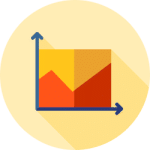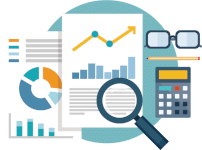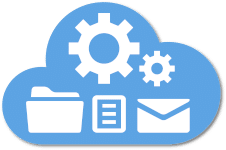Understanding Cloud Applications
Cloud applications have revolutionized the way software is developed, deployed, and accessed. They offer numerous benefits, such as scalability, flexibility, and cost-effectiveness, making them an ideal choice for modern application development.
In this section, we will take a high-level look at the concept of cloud applications and delve into the key aspects that differentiate cloud based apps from traditional applications. Understanding the fundamentals of cloud apps is crucial for developers looking to harness the power of the cloud and build cutting-edge applications that leverage its full potential.
What Are Cloud Applications?
Cloud applications, or cloud apps, also known as cloud-based applications or software as a service (SaaS) applications, are software programs or services that are delivered over the internet and run on remote servers instead of on local devices or traditional on-premises infrastructure. These applications leverage the power of cloud computing, enabling users to access and utilize software resources and functionalities remotely.
Unlike traditional desktop applications and mobile apps that require installation and maintenance on individual devices, cloud applications operate on a centralized infrastructure, commonly referred to as the cloud. This infrastructure comprises a network of servers, storage systems, and other computing resources that are maintained and managed by cloud service providers.
Cloud applications are accessed through web browsers or dedicated client applications, allowing users to interact with the cloud-based software and access their data from any device with an internet connection. The underlying infrastructure and resources required to run the applications are abstracted from the end-users, providing a seamless and scalable experience.
Benefits of Cloud Applications
Cloud applications offer a wide range of benefits that have revolutionized the way software is developed and deployed. In this section, we will explore the key benefits of developing cloud applications and how they can positively impact your organization’s growth and success.

Scalability and Flexibility
One of the key advantages of developing cloud applications is their inherent scalability and flexibility. Cloud platforms can automatically allocate additional resources, such as computing power, storage, and bandwidth, to meet the changing demands of an application. This elasticity enables applications to handle varying workloads efficiently, ensuring optimal performance and responsiveness.
Backendless excels in supporting scalable cloud application development. Its infrastructure is designed to handle high traffic and varying workload demands, with automatic scaling capabilities that allocate resources as needed. With Backendless, developers can build applications that seamlessly accommodate user growth and surges in demand without compromising performance.

Cost Savings
Cloud applications offer significant cost savings compared to traditional on-premises software solutions. By leveraging the cloud infrastructure provided by service providers like Backendless, organizations can eliminate the need to invest in expensive hardware, server maintenance, and ongoing infrastructure management. Cloud applications operate on a pay-as-you-go model, where businesses only pay for the resources and services they consume, making it a cost-effective solution for startups and enterprises alike.
Backendless aligns with cost-saving principles by offering a flexible pricing structure based on resource usage. Its pay-as-you-go model allows developers to optimize costs by paying only for the resources they utilize, without upfront investments or overprovisioning. This approach enables organizations to allocate their budget efficiently and scale their applications without incurring unnecessary expenses.

Improved Collaboration
Cloud applications foster seamless collaboration and enable real-time communication and cooperation among team members, regardless of their geographical locations. With cloud-based tools and shared access to resources and data, developers can collaborate on projects more effectively, share code/logic, and track changes. This level of collaboration promotes agile development practices, enhances productivity, and allows for more efficient project management.
Backendless supports collaborative development through its team collaboration features. Backendless apps support unlimited team members standard, with tools for managing team member access and transferring ownership of the application. With Backendless, developers can collaborate seamlessly, whether they are working together in the same office or remotely across different time zones.

Enhanced Security
Security is a paramount concern when developing cloud applications. Cloud platforms like Backendless implement robust security measures to protect the confidentiality, integrity, and availability of application data. These measures include data encryption, access controls, user authentication, and monitoring mechanisms to detect and mitigate potential threats.
Backendless prioritizes security and offers comprehensive security features to protect cloud applications. It incorporates industry-standard encryption algorithms, secure data transmission protocols, and user authentication mechanisms to ensure data privacy and protect against unauthorized access. Backendless also offers monitoring and auditing tools to help developers track and analyze security events, further enhancing the overall security posture of cloud applications.
Key Steps in Developing Cloud Applications
Developing cloud applications involves a series of key steps that lay the foundation for a successful project. From requirement gathering to deployment, each step plays a crucial role in shaping the final outcome. In this section, we will explore the key steps involved in developing cloud applications and discuss best practices to ensure a streamlined and efficient cloud development process.

Requirement Gathering and Analysis
The success of a cloud application relies heavily on understanding the requirements and needs of the users. In this section, we will delve into the crucial process of requirement gathering and analysis for cloud applications. We will discuss the importance of gathering comprehensive requirements, conducting thorough analysis, and aligning them with the overall goals and objectives of the application.
Identifying Project Goals and Objectives
Before embarking on developing a cloud application, it’s crucial to identify and define clear project goals and objectives. This involves understanding the business requirements, user needs, and desired outcomes. By having a clear vision of the project goals, developers can align their development efforts and make informed decisions throughout the development process.
Understanding User Needs
To develop a successful cloud application, it’s essential to understand the needs and preferences of the end-users. Conducting user research, gathering feedback, and creating user personas can provide valuable insights into user expectations, pain points, and desired features. This user-centric approach ensures that the application meets the needs of its intended audience.
Backendless supports user management and analytics tools that help developers understand user behavior and preferences. These tools provide valuable data on user interactions, usage patterns, and feedback, allowing developers to make data-driven decisions during the development process.
Defining Functional and Non-Functional Requirements
In addition to understanding user needs, developers must define both functional and non-functional requirements to develop a cloud based application. Functional requirements outline the desired features, functionalities, and workflows of the application, while non-functional requirements encompass factors such as performance, security, scalability, and usability.
Backendless simplifies backend development by providing pre-built server-side functionality. Developers can leverage Backendless’ extensive collection of backend services and APIs to meet various functional requirements without the need for extensive custom coding. This accelerates development time and ensures a robust foundation for the application.

Designing the Cloud Architecture
Designing a robust and scalable cloud architecture is pivotal for developing high-performing cloud applications. In this section, we will explore the key considerations and best practices involved in designing the cloud architecture for your application. From selecting the appropriate cloud services and components to ensuring fault tolerance and scalability, we will discuss the essential elements that contribute to a well-architected cloud infrastructure.
Choosing the Right Cloud Platform
Selecting the appropriate cloud platform is a crucial decision in developing cloud applications. Factors to consider include scalability, reliability, security, cost-effectiveness, and the availability of services and features that align with the project requirements. Each cloud platform may have its unique offerings and strengths, and making an informed choice is vital.
Backendless offers a comprehensive cloud backend platform that supports various application types and deployment options. It provides a scalable infrastructure with serverless capabilities, enabling developers to focus on building the application’s core logic rather than managing infrastructure. Backendless also offers a range of services and features that align with different project requirements, making it a versatile choice for cloud application development.
Deciding on the Application Type (SaaS, PaaS, IaaS)
Choosing the appropriate application type depends on the project’s specific needs and requirements. SaaS (Software as a Service) applications are fully hosted and managed by the cloud provider, PaaS (Platform as a Service) provides a platform for developers to build and deploy applications, and IaaS (Infrastructure as a Service) offers virtualized infrastructure resources for more control and customization.
Architectural Considerations (Scalability, Reliability, Security)
When designing the cloud architecture, scalability, reliability, and security are critical considerations. The architecture should be able to scale seamlessly to handle increasing user loads, provide high availability and fault tolerance, and ensure robust security measures to protect the application and user data.
Backendless’ cloud infrastructure addresses scalability, reliability, and security concerns. With automatic scaling capabilities, Backendless can handle increased traffic and workload demands without compromising performance. Its redundant infrastructure and fault-tolerant architecture ensure high availability, while comprehensive security measures safeguard data and protect against cyber threats.
For developers with significantly higher security needs, Backendless offers an Enterprise Security function pack as well as standalone software (Backendless Pro) that can be installed on most on-premise or public cloud services such as AWS, Google Cloud Platform, and Azure.

Development and Deployment
The development and deployment phase of a cloud application is where the vision and requirements take shape. In this section, we will dive into the development process, highlighting the best practices, methodologies, and tools used to develop cloud applications efficiently. We will also explore the deployment strategies and techniques that enable seamless deployment of cloud applications across various environments, ensuring a smooth and successful launch.
Selecting the Appropriate Development Tools and Technologies
Choosing the right development tools and technologies is essential for efficient cloud application development. Factors to consider include programming languages, frameworks, libraries, and development environments that align with the project requirements and the expertise of the cloud software development’ team.
Backendless supports multiple programming languages, including JavaScript, Java, and Swift, allowing developers to choose the language that best suits their skills and project requirements. It also offers software development kits (SDKs) and libraries for various platforms, simplifying the development process and providing a cohesive development experience. Developers can also choose to build their Backendless apps entirely without code using Codeless.
Implementing Cloud Services and Backend Functionality
Integrating cloud services and backend functionality is a crucial aspect of any cloud native application development. This involves implementing features such as user management, data storage, real-time communication, push notifications, and integration with third-party services and APIs.
Backendless offers a comprehensive suite of backend services and APIs that facilitate the development of these features. Its user management services handle user authentication, registration, and role-based access control. Backendless’ data storage capabilities provide a scalable and secure database for storing and retrieving application data. Additionally, Backendless’ real-time messaging and push notification services enable real-time communication and engagement with users.
Testing and Debugging
Thorough testing and debugging are essential to ensure the quality and reliability of a cloud application. This involves testing the application’s functionality, performance, security, and compatibility across different devices and platforms. Debugging is the process of identifying and resolving issues and errors in the codebase.
Backendless offers testing and debugging tools to assist developers in these processes as well as industry-leading support. It provides a testing environment where developers can simulate various scenarios and ensure the application functions as expected. Backendless also offers debugging capabilities, allowing developers to identify and resolve issues efficiently.
Deployment and Continuous Integration
Deploying a cloud application involves making it available for users to access and interact with. App deployment includes configuring the application, setting up the necessary infrastructure, and deploying the codebase to the cloud-based app development platform.
Backendless simplifies deployment, making it as easy as clicking a single button to deploy an app or app updates.

Integration and Data Migration
Integration and data migration play a vital role in connecting the cloud application with other systems and transitioning data to the cloud environment. In this section, we will discuss the importance of seamless integration and data migration for cloud applications. We will explore the various integration patterns, technologies, and strategies that enable smooth data flow and interoperability between different systems, as well as the best practices for migrating data to the cloud securely.
Integrating with Other Systems and APIs
Cloud applications often require integration with external systems, services, and APIs to extend functionality or leverage existing resources. This integration enables data exchange, collaboration, and seamless user experiences.
Backendless offers extensive integration capabilities, allowing developers to connect their cloud apps with various systems and APIs. Whether integrating cloud-based apps with third-party services (directly or through Zapier or Make), databases, or custom APIs, Backendless provides tools and features to simplify the integration process and streamline data exchange.
Data Migration Strategies
Data migration involves transferring data from existing systems or databases to the cloud application. Cloud migration, or migrating data from an owned physical server to a cloud server, can be used to secure and backup critical data. It is crucial to plan and execute data migration carefully to ensure data integrity and minimize downtime.
Backendless provides data import/export and migration tools that facilitate the smooth transition of data to the cloud application. Developers can easily import data from various file formats or migrate data from existing databases to Backendless’ cloud storage. This simplifies the data migration process and ensures a seamless transition to the cloud.
Ensuring Data Integrity and Security
Data integrity and security are paramount in cloud application development. It is essential to protect data from unauthorized access, ensure confidentiality, and maintain data integrity throughout the cloud-based app’s development lifecycle.
Backendless prioritizes data integrity and security, offering features such as data backup, encryption, and access controls. Developers can set access permissions to restrict unauthorized access and leverage backup capabilities to safeguard data against loss or corruption.
Challenges in Developing Cloud Applications
Developing cloud applications brings about certain challenges not faced in traditional app development. Developers need to address these concerns in order to ensure a successful implementation. Understanding and mitigating these challenges is crucial for the smooth development and deployment of cloud applications. Let’s explore some of the common challenges faced in developing cloud applications:
Vendor Lock-In and Portability Concerns
One challenge in developing cloud applications is the risk of vendor lock-in. Vendor lock-in occurs when a cloud application becomes tightly coupled to a specific cloud platform or provider, making it difficult to migrate or switch to an alternative provider. This can limit flexibility and hinder the ability to leverage different cloud solutions and services or take advantage of cost-saving opportunities.
To address this challenge, it is recommended to adopt cloud-agnostic development practices. This involves utilizing standard APIs, avoiding platform-specific dependencies, and leveraging cloud management tools that support multiple cloud providers. By embracing cloud-agnostic development, developers can ensure portability and reduce the risk of vendor lock-in.
Backendless promotes portability by using cloud-based solutions supporting standard APIs and providing data export capabilities, allowing developers to maintain control and flexibility over their cloud applications.
Data Privacy and Compliance
Data privacy and compliance are significant concerns in cloud development. Organizations must adhere to data protection regulations, safeguard user data, and ensure compliance with industry-specific and region-specific standards. Failure to meet these requirements can result in legal and reputational consequences.
For example, most organizations must comply with data protection regulations such as the General Data Protection Regulation (GDPR) or the California Consumer Privacy Act (CCPA), and implement measures to secure user data. Some, but not all, of these regulations are handled by the service provider, however it is recommended that developers understand these regulations well enough to implement application-specific protocols to comply fully.
To tackle data privacy and compliance challenges, developers must prioritize security measures. This includes implementing encryption for data at rest and in transit, adhering to authentication and access control best practices, and regularly monitoring and auditing security measures. Cloud service providers like Backendless offer robust security features and compliance options to assist developers in meeting data privacy and compliance requirements.
Performance and Latency Issues
Performance and latency are critical factors that can impact the user experience of a cloud application. Slow response times or high latency can result in frustration for users and negatively affect the application’s usability and success.
Addressing performance and latency challenges requires a focus on optimization. Developers should employ techniques such as caching, load balancing, and content delivery network (CDN) integration to minimize latency and maximize application performance. Additionally, utilizing scalable infrastructure that can handle high traffic and workload demands is crucial for delivering a smooth user experience.
Cost Management and Optimization
Cost management and optimization are ongoing challenges in cloud application development. Cloud resources come at a cost, and organizations must monitor resource usage, optimize costs, and avoid unnecessary expenses.
To manage costs effectively, developers should employ resource monitoring and optimization techniques. This involves monitoring resource consumption, identifying inefficient usage patterns, and optimizing resource allocation to minimize expenses. Leveraging cloud platforms like Backendless that offer flexible pricing models based on resource usage enables organizations to scale their applications without incurring unnecessary costs.
By acknowledging and proactively addressing these challenges, developers can navigate the complexities of the cloud environment and application development more effectively. Backendless provides tools and features that specifically address these challenges, offering a robust platform for developing and deploying cloud applications with ease.
Conclusion
In conclusion, developing cloud apps requires a systematic approach and adherence to best practices. Throughout this guide, we have explored the key steps involved in developing cloud apps, highlighted best practices, and discussed challenges that technical app developers may encounter.
Backendless, as a leading cloud backend platform, offers a comprehensive suite of tools and features that address these issues and facilitate cloud app development. With Backendless, cloud app developers can leverage scalable infrastructure, robust security measures, collaboration features, cloud native development and seamless integration capabilities to build and deploy powerful cloud apps efficiently.
Embrace the power of Backendless for your cloud application development needs and unlock limitless possibilities for innovation, scalability, and success!








